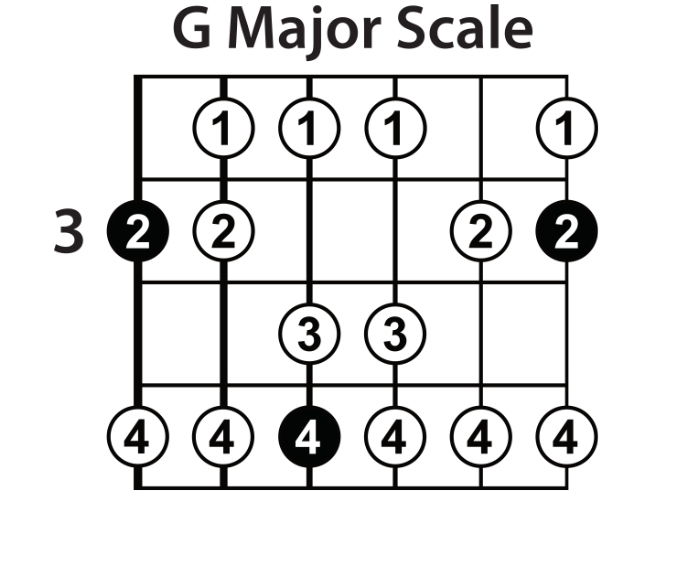Before we start learning the major scale, let’s look at how to read a scale diagram. Scale diagrams have six vertical lines, and the line on the very left represents the low E string and the line on the right represents the high E string. The horizontal lines of the diagram represent the frets.

Welcome to the third lesson of the Lead Guitar Quick-Start Series. In this lesson, we’ll be taking a look at the major scale. The major scale is the most important scale you’ll learn as a guitarist. It’s the foundation for all the other scales and chords you’ll learn in your time on the guitar. We’ll be going over the mechanics and memorization of the major scale, and you’ll start to practice this scale shape with a jam track.

An important thing to notice with this first scale is the black, filled-in notes in the chord diagram. These are root notes. Root notes are the notes that share the same name as the scale. In the example in the video, you’ll see a G major scale. All the G notes in the scale are filled in. The G notes are the root notes of the G major scale.
The major scale has seven notes, but when you take a look at the scale diagram, you’re probably going to wonder why there are more than seven notes in this scale shape. Basically, once you’ve played the first seven notes in the scale, you’re going to repeat those notes in a higher octave.
As you learn the shape, you’ll want to break it up into smaller pieces. Start by just memorizing one string at a time. Then you can slowly work on combining them into one full shape. Practice going both up and down this scale, as you’ll be using it a lot both ways. You’ll also want to fully memorize this entire shape and get it committed to muscle memory. That way you won’t even have to think about it when you’re playing through this scale shape.
Add this new scale shape to your daily practice. It may take you awhile to get this scale completely down and that’s perfectly fine. There is a jam track available here to download that you can use to play this scale along to. Playing along to a jam track is a much more motivating way to practice, so focus on having fun!
Even if you don’t have this shape completely down yet, you can still move onto the next lesson in this series. In the next video, we’re going to be learning the next important scale you’ll need to know: the major pentatonic scale.
Are you looking for more lead guitar lessons and relevant jam-tracks? Guitareo is Nate Savage’s step-by-step video training system. It has some great songs for lead guitar and it also covers many other important styles of music including rock, country, fingerstyle, metal, classical, bluegrass, jazz, and more. Best of all it includes a huge library of original jam-tracks so you can apply everything to music.